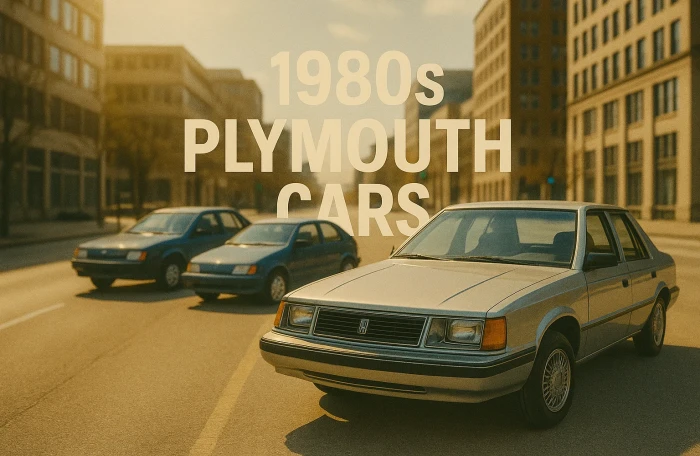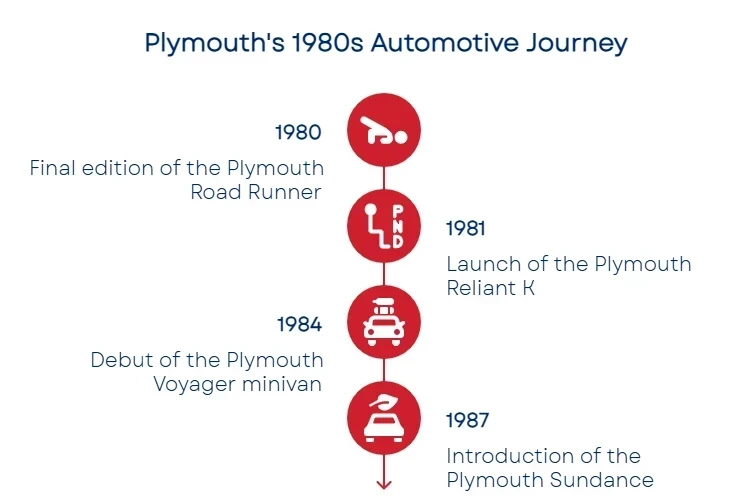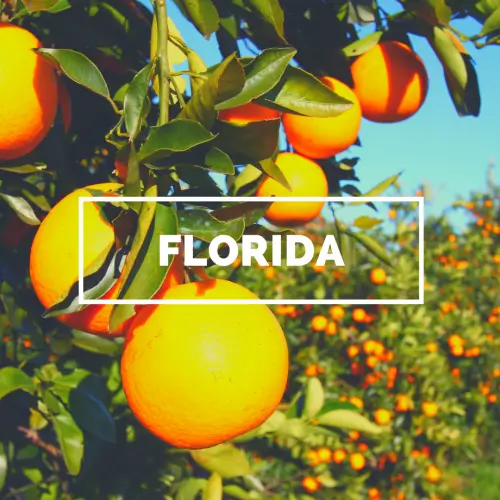The Decade When Plymouth Refused to Blend In
1980s Plymouth cars weren’t made to sit quietly in the corner; they were built to make an impression. Whether it was the boxy boldness of the Reliant K or the final flare of the Road Runner, Plymouth turned functionality into flair at a time when the automotive industry was shifting fast.
For some, these cars were practical choices that got them through the daily grind. For others, they became symbols of personality in a world filled with lookalikes. Today, those identical vehicles are returning to garages, auction blocks, and conversations among collectors, not just for their value, but for what they represent.
Whether you’re on the hunt for a Horizon in decent shape, trying to decide if restoring a Gran Fury is worth the cost, or just curious about why these boxy beauties still hold so much interest, this guide is for you.
What You’ll Learn
Before you start researching 1980s Plymouth cars or commit to buying or restoring one, there are a few key things that can save you time, money, and regret. This guide walks you through each of them so you know where to focus your attention.
Here’s what you’ll learn:
Which 1980s Plymouth models are still prized by collectors today
What made Plymouth stand out in design and engineering during the 1980s
What to watch for when restoring or shipping a vintage Plymouth
Summary: A Closer Look at 1980s Plymouth Cars
1980s Plymouth cars stood out in a crowded market by blending practicality with memorable style. While some brands chased trends, Plymouth focused on reliability, affordability, and bold design. Whether you're searching for a model to restore or want to understand what makes these vehicles collectible today, your best option depends on what matters most: performance, nostalgia, or long-term value.
Here’s a more detailed breakdown:
Popular Everyday Models: The Reliant K and Horizon offered fuel-efficient performance at an affordable price. These were bestsellers for families and commuters.
Collectible Standouts: The final-edition 1980 Plymouth Road Runner and early-generation Voyager minivan are fan favorites thanks to their rarity and cultural impact.
Performance and Innovation Highlights: The adoption of front-wheel drive, the influence of Chrysler’s K-platform, and bold angular styling set Plymouth apart during a competitive era.
Restoration-Friendly Options: Cars like the Reliant K and Sundance have relatively simple mechanical systems, making them easier and more affordable to restore and maintain.
Classic Car Shipping Considerations: Owners seeking to safeguard their investment during transport often choose services such as enclosed shipping for classic cars or carriers that specialize in collector vehicles.
Other Notable Mentions
Plymouth Conquest: A sporty import-based coupe that brought turbocharged performance to Plymouth’s lineup.
Plymouth Acclaim: Though released at the tail end of the decade, it reflected the brand’s transition into the 1990s.
Quick Comparison of Key Models
Here’s how Plymouth’s most influential 1980s cars compare across specs, features, and historical impact:
Plymouth Cars That Defined the 1980s
In a decade where the American auto industry faced rising competition from imports and pressure to innovate, Plymouth found a way to stay relevant.
By leaning into practicality, adapting engineering strategies, and striking a balance between affordability and design, Plymouth's 1980s lineup delivered options that helped define the brand's last significant era of influence.
Plymouth Reliant K
Launched in 1981 as part of Chrysler’s life-saving K-car platform, the Reliant K played a significant role in pulling the company back from financial disaster. It was fuel-efficient, budget-friendly, and featured front-wheel drive; still a new standard at the time.
With over one million units sold by the end of its run, the Reliant helped redefine American sedans during a time when buyers wanted function without flash. Its success proved that Detroit could adapt to the growing popularity of Japanese compacts.
Plymouth Horizon
One of the first American-made hatchbacks with front-wheel drive, the Horizon was a practical response to rising gas prices and shifting consumer expectations.
Released in 1978 but popular well into the 1980s, the Horizon earned praise for its affordability, maneuverability, and surprisingly modern layout. It won Motor Trend’s Car of the Year award in its debut year and remained a solid seller thanks to its no-frills reliability and simple mechanics.
Plymouth Gran Fury
A nod to more traditional full-size buyers, the Gran Fury became Plymouth’s flagship sedan after the brand moved away from performance muscle cars.
Known for its spacious cabin and durability, it served extensively in police and municipal fleets throughout the 1980s. While it didn’t innovate as radically as other models, it preserved the classic big-sedan appeal that older drivers and fleet buyers still valued.
Plymouth Road Runner (1980 Edition)
By 1980, the Road Runner had transitioned from muscle car hero to badge-equipped trim on the Volaré, marking the end of an era.
Even so, the final-year Road Runner maintained the spirit of earlier models with its available 318ci V8 engine and sport-inspired looks. Though far removed from its 1968 debut, the 1980 edition is now sought after as a collectible because it was the last time the Road Runner name appeared on a Plymouth vehicle.
Plymouth Voyager
Debuting in 1984, the Plymouth Voyager was one of the first modern minivans, helping to reshape the American family vehicle segment. Built on a car-like unibody platform, it offered the comfort of a sedan with the space of a van.
The Voyager’s sliding door, compact dimensions, and fuel efficiency made it an instant success, pioneering a format that became a staple of suburban life for decades.
Plymouth Sundance
Introduced in 1987, the Sundance provided Plymouth with a modern entry into the compact market. It was built on Chrysler’s P-body platform and offered fuel-injected engines, improved suspension, and a clean exterior design.
The Sundance sold well into the early '90s and was often chosen by younger buyers and budget-conscious families. Its simplicity and availability make it a common choice for beginner restorers today.
The Engineering Behind Plymouth’s 1980s Success
The 1980s were a turning point for American automakers. Fuel economy, safety regulations, and global competition forced companies to innovate quickly or risk becoming irrelevant. Plymouth, under Chrysler’s umbrella, used this pressure as motivation to rethink how its cars were built and how they looked.
What emerged was a lineup that helped define the brand’s last wave of relevance before its eventual retirement.
Front-Wheel Drive: A New Standard
By the early 1980s, front-wheel drive was no longer a luxury; it was a necessity. Plymouth made the switch with models like the Horizon and Reliant K.
These vehicles handled better in rain and snow, offered more interior space due to flatter floor designs, and were cheaper to build and maintain. The layout also improved fuel efficiency, which was a top concern for buyers who had been burned by fuel crises in the '70s.
The Power of Chrysler’s K-Platform
The K-car chassis became the backbone of not just Plymouth but Chrysler’s entire survival strategy. It was a modular, cost-effective platform that could support sedans, wagons, convertibles, and even minivans.
For Plymouth, this meant cars like the Reliant K and Voyager could be offered with multiple trims and purposes, all while sharing a core structure. This versatility kept development costs low and buyer options high.
Boxy Designs That Matched the Times
Angular silhouettes, squared-off grilles, and straight body lines became Plymouth’s design language throughout the decade.
These cars weren’t flashy, but they were distinctive. From the bright color options on the Horizon to the authoritative stance of the Gran Fury, Plymouth leaned into the era's aesthetic. The result? Cars that reflected 1980s values: practicality, straightforward styling, and a no-nonsense attitude.
Fuel Efficiency Without Sacrificing Utility
At a time when gas prices could swing sharply, Plymouth’s compact and mid-size offerings focused on stretching every gallon. Cars like the Horizon delivered fuel economy in the high 20s to low 30s mpg, depending on the trim.
The Voyager offered minivan utility with the running costs of a sedan. These trade-offs helped attract buyers who didn’t want to give up comfort but needed affordability.
Accessible Engineering That Aged Well
Many of Plymouth’s 1980s vehicles utilized proven, simple technology, making them ideal candidates for restoration today.
Carbureted engines, minimal onboard electronics, and standard parts mean that even hobbyist mechanics can work on these cars without specialty tools. Accessibility is one reason collectors continue to seek out models like the Sundance and Reliant.
Tips for Finding and Restoring a Classic 1980s Plymouth
Whether you're tracking down a first-year Voyager or planning to bring a faded Horizon back to life, restoring a 1980s Plymouth comes with its challenges and rewards. The good news? These vehicles are some of the most approachable classics to work on, especially for beginners.
Where to Start Your Search
Online platforms like ClassicCars.com and Hemmings often list clean or restorable models, but don’t overlook forums and Facebook groups focused on vintage Mopars.
Local auctions and estate sales can also turn up original-owner gems with minimal rust and solid documentation.
Common Restoration Challenges
Age-related issues, such as worn interiors, surface rust, and outdated emission systems, are typical. Dashboards often crack, and some parts, especially trim pieces, can be challenging to find.
Still, most mechanical parts for K-platform cars and popular models, such as the Sundance or Voyager, remain widely available.
Helpful Resources and Communities
Restorers benefit from a strong enthusiast network. The Allpar forums and Plymouth pages on Reddit are full of model-specific tips.
Aftermarket support from suppliers like RockAuto and Year One helps with replacement parts, especially for drivetrain and suspension components.
Preservation Tips for Long-Term Storage
If your restored Plymouth won’t be a daily driver, storage matters. Keep it in a dry, well-ventilated space to prevent rust.
Use a trickle charger to protect the battery, and start it monthly to circulate fluids. Occasional short drives are best for maintaining seals, tires, and fuel systems.
Whether you’re shipping a project car you've just bought or protecting a finished restoration, it’s worth exploring classic car transport options that offer extra care and attention.
Final Thoughts
The story of 1980s Plymouth cars isn’t just about performance specs or production numbers; it’s about how ordinary cars became lasting memories. These vehicles didn’t chase status. They showed up, did the job, and quietly became part of people’s lives. And that’s why they still matter.
Whether it’s a Voyager that carried a generation or a Reliant K that refused to quit, these cars tell stories you can still hear if you’re willing to turn the key.
Ready to Bring a Classic Plymouth Back to Life?
Whether you’re restoring a final-year Road Runner or preserving a family Voyager, how you ship it matters. AmeriFreight Auto Transport helps classic car owners transport their vehicles with care, offering reliable services that respect the value of every detail.
Want to get started? Get a free quote today.
Frequently Asked Questions (FAQs)
What cars did Plymouth make in the 1980s?
Plymouth’s 1980s lineup included the Horizon, Reliant K, Gran Fury, Voyager minivan, Road Runner (1980), Sundance, Turismo, and Caravelle. These ranged from compact hatchbacks to full-size sedans and minivans.
Why was Plymouth unsuccessful?
Plymouth struggled in its final decades due to internal competition within Chrysler, reduced marketing focus, and an aging product lineup that lacked innovation compared to rivals.
What does the K in K-car stand for?
The “K” doesn’t officially stand for anything specific; it was Chrysler’s internal designation for the platform used in models like the Plymouth Reliant and Dodge Aries.
Are Plymouth cars still made?
No. Plymouth was discontinued in 2001 as part of Chrysler’s brand consolidation. Its most popular models were either retired or rebadged under the Dodge and Chrysler brands.
Disclaimer: This content is provided for general informational purposes only and should not be taken as legal, financial, or professional advice. AmeriFreight does not guarantee pricing, timing, or availability, and services are subject to change based on carrier availability and location constraints. Always consult a qualified professional for guidance specific to your situation.















